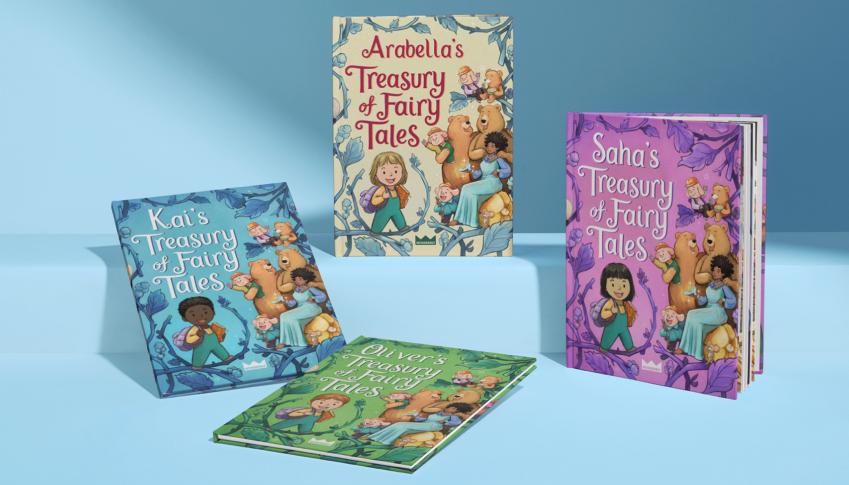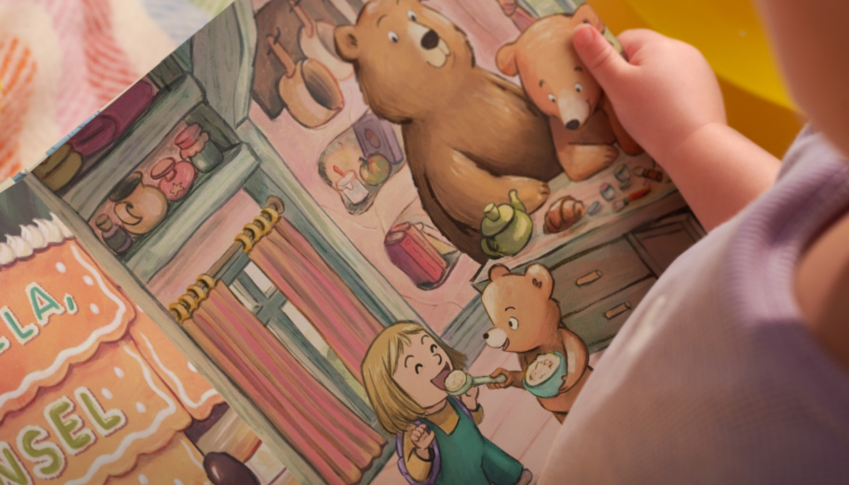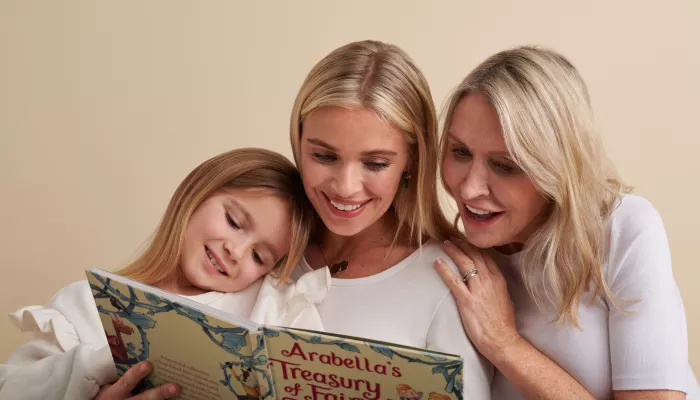They’re tales as old as time, and as this research shows, fairy tales and child development are teaching our children about much more than princes and princesses.
Apparently, Albert Einstein – that clever grown up with the gravity defying hair – is quoted as saying: “If you want your children to be intelligent, read them fairy tales. If you want them to be more intelligent, read them more fairy tales.” Quite the endorsement! However, in today’s society there have been very justified concerns over the unrealistic and often dated stereotypes these stories can set, and whether they could actually be doing more harm than good.
As storytelling is our business, we thought it was about time we dug a little deeper into the pros and cons of fairy tales, and asked ourselves: how do fairy tales affect child development? Read on to find out.
How do fairy tales affect a child’s imagination?
Perhaps the better question would be, how do they not? Historically, fairy tales have been read to children as an introduction into storytelling, and as a result, have informed each generation to do the same with their children. It is hard to imagine kids progressing from infancy to independent play without the inclusion of castles, dragons, some degree of peril (the floor is lava and the cushions from the sofa are our only chance of making it out in one piece!) – and in order for these games to be vivid and entertaining, the children need to ‘make believe’ themselves in the scenarios they dream up. And where do they learn this technique? You guessed it: fairy tales. Whether in their traditional form – think dangerous woods, noble royalty and bears with a penchant for porridge – or more contemporary versions, these tales open children’s minds to possibilities, such as a stick picked up on a walk actually being secretly alive. Magic stuff.
An introduction to story structures
Stories are great, and we certainly couldn’t imagine a world without them, but cast your mind back to the child in your life in baby form, and chances are you’ll remember them not having a clue what was going on from one minute to the next. Stories are the next step on from word association picture books, they teach children that life runs in pockets of time which have an arc of ‘beginning, middle and end’. Essentially, stories help to introduce structure in many relatable situations: the adventures that can happen from the beginning of a day to bedtime. This narrative can then be applied to far more complex scenarios in the future, such as the waiting time for a new sibling, a term at school, a family trip or even a difficult period of change. The certainty of a ‘beginning’ and an ‘end’ never changing is a powerful thing.

Conflict resolution
Now to some of the tricky stuff: lots of grown-ups aren’t sure when is the right time to introduce fairy tales to children, as many of the themes can be quite sad or scary. From the death of parents, to big bad wolves and even being kidnapped and eaten (a little extreme) it is understandable that nightmares could be a consequence. And in reality, that can and does happen. However, a big part of raising a child is gently introducing them to the world around us, and fairy tales can provide key learning moments when read and discussed with an adult. As a result, when children find themselves in not-so-nice situations in the future, they can draw on the relative experiences of the characters and stories they’ve been introduced to, and begin to think rationally about fairness and reactivity. So much so, that a 2014 study concluded that the small group of adult test subjects who applied fairy tale narratives to their own issues felt “increased personal growth, self-acceptance, and an enhanced sense of appreciation of life and personal strengths, together with decreased levels of anxiety.”
Moral understanding
Themes of good and evil, right and wrong are rife in children’s literature, and in some cases can seem a little severe. However, teaching morality is another cornerstone of parenting and caregiving, and can be broken down into lots of less intimidating scenarios. As this study from 2016 demonstrates, a group of 353 children aged 8-10 who read fairy tales for two years showed improved social, emotional skills as well as increased self-awareness and emotional regulation. Whether it’s basic manners, sharing, kindness or not deliberating hurting those around you – drawing on fairy tales as examples of this kind of behaviour contextualises the concepts for young minds, and develops an understanding of consequences and empathy. The fact that the ‘baddie’ who usually portrays the type of traits that are considered less desirable, such as selfishness, greed, violence or theft, is always defeated by the traits of ‘goodness’ in the heroes of the tales, can motivate children to emulate those types of behaviours instead.

Critical thinking and challenging stereotypes
As we as a society continue to progress, so does our understanding of others – from race to culture, gender and identity. This is brilliant, but can also make many existing stories feel rightfully problematic. However, instead of disregarding swathes of tales, grown-ups could instead use these stories to pose questions to their child about what is right and wrong, and use examples of old-fashioned thinking to show how much things have changed. It is certainly something to be approached from an individual perspective, and there is no right or wrong decision to make about something so nuanced, but it could also provide a valuable, and gentle learning opportunity. One of the most contentious issues that arises from this debate, is that of gender stereotyping, especially around the concept of ‘princesses’. In a 2021 study by Sarah M. Coyne, PhD – a professor at the School of Family Life at Bringham Young University in Provo, Utah – in excess of 300 children were surveyed at preschool age, and then again five years later. Coyne concluded that “In the short-term, princess culture had a negative effect. But this changes over time. We’re now seeing long-term positive effects of princess culture on how we think about gender.” She noted that early introduction to princesses actually resulted in more progressive attitudes to the roles of women in society, and a desire for equality. “Princesses like Moana are full of depth, passion, and goodness. The story isn’t about how she looks, it’s about following your dreams and finding who you are. Parents can take these interpersonal qualities and help their kids grow.”
